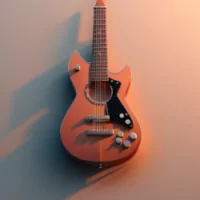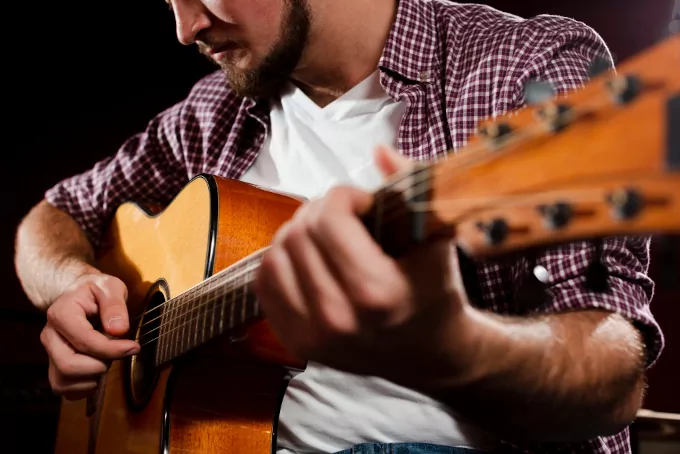Guitar jamming is a thrilling and creative activity that allows you to explore your musicality, improvise, and interact with other musicians. Jamming is an important part of refining your talents and learning the language of music, whether you’re a beginner or an expert player. In this article, we’ll walk you through the steps of learning to jam on the guitar, from laying the groundwork to getting into the groove with other musicians.
Make sure you have a firm foundation in guitar playing before you start jamming. Acquaint yourself with typical chords, scales, and strumming patterns. This information will equip you to navigate through many musical styles during jam sessions.
Listening to different types of music and guitarists is vital for developing your musical vocabulary. In a band context, pay attention to how they improvise, create melodies, and interact with other instruments. You will get inspiration and ideas for your jamming sessions by absorbing various musical influences.
Understanding song structure is essential for jamming success. Familiarize yourself with common song components like verses, choruses, bridges, and solos. This understanding will help you navigate jam sessions with a clear idea of where the music is going.
Learn to Play the Guitar
Jamming relies heavily on improvisation. To improve your improvisational talents, practice soloing over background recordings or simple chord progressions. Experiment with scales and licks to make melodies that fit the song. Remember that improvisation is about expressing yourself, so don’t be afraid to take risks and experiment with new ideas.
Begin by jamming alone if you’re new to jamming. Play along with your favorite tunes or use loop pedals or recording software to make your background tracks. This solo jamming can help you develop your musical instincts and get more comfortable with improvisation.
It’s a great approach to broaden your musical horizons to jam with other musicians. Seek out other musicians who are interested in jamming and producing music with you. Local music forums, social media groups, and music schools can all be great venues to meet new jam partners.
Take some time to explore your musical interests and preferences before starting a jam session with other musicians. Establish a common ground by choosing a musical genre, key, or chord progression that everyone can agree on. This will result in a consistent beginning point for your jam.
During jam sessions, effective communication is critical. Pay close attention to what other musicians are doing and react to their musical cues. To keep the jam running smoothly, pay attention to dynamics, tempo, and mood.
Accept the flow of the music when jamming. Allow yourself to be in the moment, reacting naturally to the music and the other musicians’ energy. Because jamming is all about spontaneity and musical engagement, let your emotions and creativity influence your playing.
Because jamming is a collaborative effort, avoid dominating the session or concentrating only on your playing. Encourage and support other musicians’ efforts, and be willing to attempt new musical concepts presented by the ensemble.
Take time after each jam session to reflect on what went well and what could be improved. Each jam session will teach you something new that will help you grow as a musician and improve your jamming skills over time.
Guitar jamming is a liberated and expressive method to interact with your instrument and other musicians. You may unlock the rhythm and enjoy the delight of spontaneous musical invention by laying a solid foundation, practicing improvisation, and working with like-minded artists. Remember that jamming is about embracing your creativity, developing musical rapport, and discovering new sounds with your friends. So gather your instruments, find some jamming buddies, and let the magic of jamming take you on a musical adventure unlike any other.
Image by Freepik

